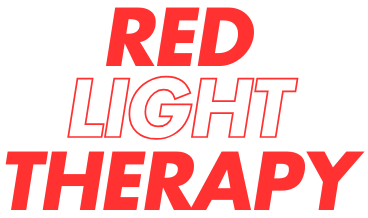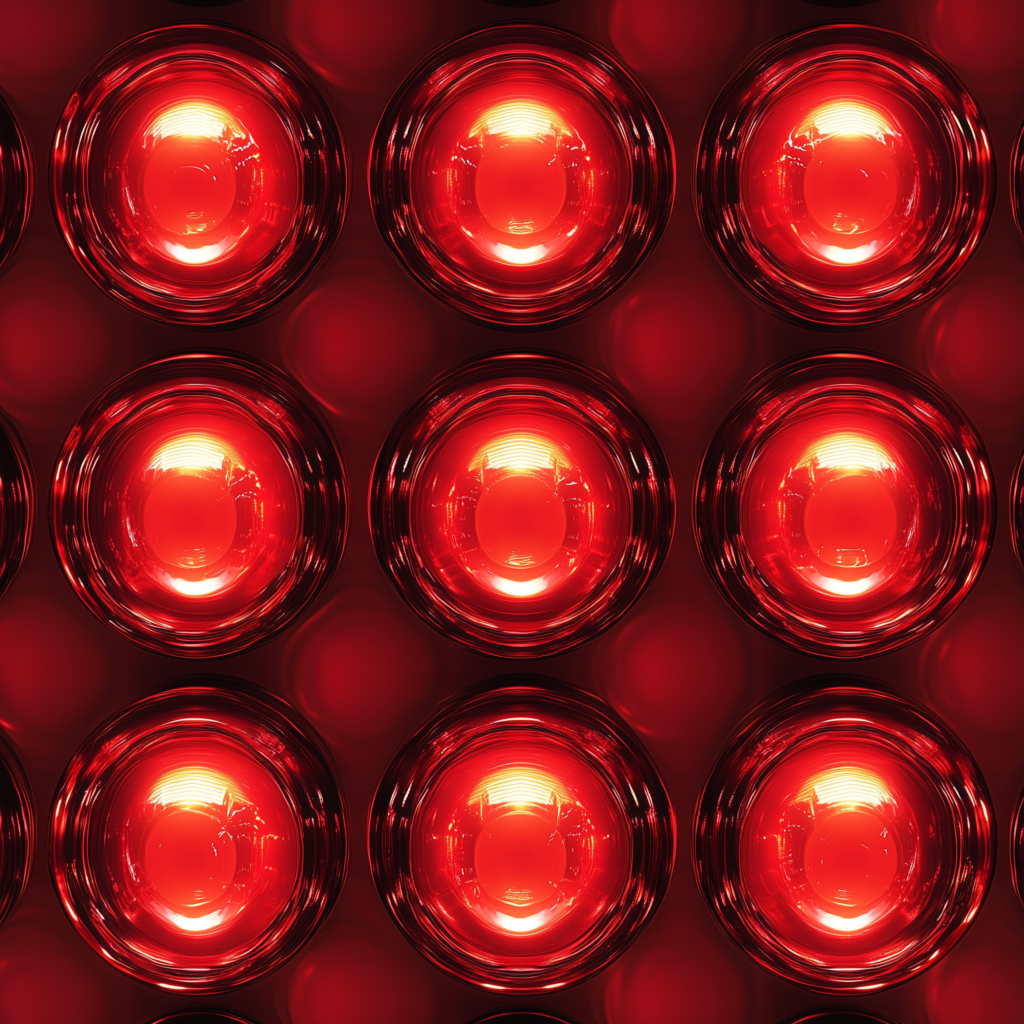Red light therapy, also known as low-level laser therapy, has gained attention as a potential solution for improving skin health and promoting healing. By using low wavelengths of red and near-infrared light, this non-invasive treatment aims to stimulate the body’s natural cell regeneration processes. From reducing wrinkles and scars to aiding in muscle recovery, its applications are as diverse as they are intriguing.
While some studies suggest promising results, the full effectiveness of red light therapy remains under exploration. Advocates highlight its potential to address common concerns like acne, stretch marks, and inflammation, making it an appealing option for those seeking alternatives to traditional skincare or therapeutic methods. With ongoing research, this innovative therapy continues to spark curiosity and conversation.
Key Takeaways
- Red light therapy (RLT) is a non-invasive treatment that uses low-level red and near-infrared light wavelengths to stimulate cell regeneration and healing.
- It is commonly used to improve skin health by promoting collagen production, reducing wrinkles, scars, and inflammation, and aiding in acne treatment.
- RLT offers benefits beyond skincare, including accelerated muscle recovery, pain relief, improved circulation, and potential cognitive and mood enhancements.
- At-home RLT devices are convenient and safe when used correctly, though they may yield milder effects than professional treatments.
- While generally safe, individuals taking photosensitizing medications or with certain health conditions should consult a doctor before using red light therapy.
- Further research is needed to fully confirm RLT’s effectiveness, though existing studies show promising results for various therapeutic uses.
What Is Red Light Therapy?
Red light therapy (RLT) is a non-invasive treatment using low-level wavelengths of red and near-infrared light to support cell regeneration and healing. This therapy targets skin, muscle tissue, and other cells by emitting light absorbed by the mitochondria, enhancing energy production. Increased mitochondrial activity can help repair tissues and improve cellular function.
RLT involves exposing the skin to red LED light, which penetrates deeper layers compared to blue light, typically used for surface conditions like acne. Unlike ultraviolet (UV) light, which can damage skin, red light therapy operates at safe levels without causing burns or harm. It’s also referred to by terms such as low-level laser therapy (LLLT) and photobiomodulation (PBM), reflecting its application in biostimulation and photonic health interventions.
Commonly promoted benefits include treating skin concerns like wrinkles, scars, and redness, as well as enhancing healing and reducing inflammation. Devices such as lamps, handheld instruments, or panels deliver the therapy, making it accessible for at-home or professional use. While research suggests potential benefits, further studies are ongoing to better understand its full therapeutic impact.
How Does Red Light Therapy Work?
Red light therapy functions by exposing the body to low-intensity red and near-infrared light, typically within the 600-1000 nanometer wavelength range. These wavelengths penetrate the skin, reaching cells where they interact with mitochondrial components to stimulate biological effects.
The mitochondria, known as the cell’s energy factories, absorb the light and enhance the production of adenosine triphosphate (ATP), the molecule that stores energy. Increased ATP levels improve cell function, supporting tissue repair, reducing inflammation, and promoting healing at a cellular level.
Red light therapy stimulates the protein cytochrome c oxidase (CCO) within mitochondria. This activation boosts ATP synthesis and creates signaling molecules that influence gene expression and tissue regeneration. This mechanism may contribute to improved blood circulation and the reduction of pain.
Devices emitting red and near-infrared light, such as LED lamps or lasers, deliver the therapy. Unlike ultraviolet (UV) light, red light does not damage the skin or cause burns. It operates at a non-invasive, painless level, making it a safe option for various therapeutic uses.
Benefits Of Red Light Therapy
Red light therapy offers various therapeutic advantages by stimulating cellular functions and promoting overall health. Research highlights its applications in skin care, pain relief, and other areas of wellness.
Skin Health
Red light therapy promotes collagen production, improving skin elasticity and reducing fine lines and wrinkles. It helps improve skin tone, smooth texture, and may aid in treating acne and other skin conditions. By enhancing cellular repair mechanisms, it supports healing from scars and damage caused by aging or environmental factors. Studies suggest its effectiveness in reducing inflammation, thereby benefiting individuals with rosacea or psoriasis.
Muscle Recovery And Pain Relief
This therapy accelerates muscle recovery after exercise or injury by reducing inflammation and boosting blood circulation. It’s used to alleviate pain associated with arthritis, joint discomfort, and muscle soreness. Red light modulates pain pathways, which may relieve chronic pain conditions. By supporting the production of synovial fluid, it improves joint health and movement.
Other Potential Health Benefits
Red light therapy enhances blood circulation by stimulating nitric oxide release, aiding tissue oxygenation and healing. It may support cognitive function by potentially improving memory and boosting mental clarity. Some studies indicate benefits for hair growth by stimulating hair follicles in cases of alopecia. Users report improved mood and sleep quality due to its influence on neurotransmitter regulation. Early research suggests it could assist thyroid health and immune modulation in inflammatory conditions such as tendinitis or arthritis.
Is Red Light Therapy Safe?
Red light therapy is generally considered safe when used appropriately. It offers a non-invasive option with minimal risks compared to other therapies, but certain precautions ensure safe usage.
Side Effects And Precautions
Common side effects of red light therapy include mild redness or swelling of the skin. These effects typically occur after high-intensity sessions and are temporary. In rare cases, treated skin areas may darken, especially if sensitivity to the wavelength exists. Blistering is another uncommon side effect, seen primarily with improper use of stronger devices in clinical settings.
Eye damage is a potential concern due to the brightness of red light. It’s recommended to wear protective goggles during therapy to minimize this risk. Though red light isn’t strong enough to harm the eyes directly, prolonged exposure without protection can lead to discomfort or strain.
Testing the device on a small patch of skin is advised for new users, particularly when using home devices. This approach helps identify potential sensitivities to specific wavelengths. Individuals taking photosensitizing medications, such as some antibiotics or acne treatments, are at higher risk of adverse skin reactions and should consult a doctor beforehand.
Who Should Avoid Red Light Therapy?
People with a history of skin cancer or certain eye diseases should avoid red light therapy unless cleared by a medical professional. Conditions like melanoma or pre-cancerous skin lesions necessitate stricter caution due to heightened sensitivity.
Individuals on photosensitizing medications may experience amplified sensitivity to red light, increasing the likelihood of burns or pigmentation changes. Consultation with a healthcare provider is critical before proceeding with treatment if such medications are involved.
Overall, while safe for most individuals, responsible application and attention to specific health conditions are vital for minimizing risks during red light therapy.
Do At-Home Red Light Therapy Devices Work?
At-home red light therapy devices, including masks and handheld wands, offer a convenient way to experience treatment without visiting a clinic. These devices emit low-intensity red and near-infrared light, similar to professional equipment but with reduced power levels. This lower intensity may result in longer treatment times or less pronounced effects compared to clinical-grade devices.
Devices cleared by the US Food and Drug Administration (FDA) are considered safe and comparable in quality to other market-approved options. Ensuring FDA clearance is essential when choosing an at-home device. Masks designed for facial treatments target skin concerns such as acne and wrinkles, while handheld devices allow more targeted use on specific areas of the body.
Evidence suggests red light therapy may improve skin conditions like fine lines, acne, and scars over time if consistent sessions are maintained. However, studies on at-home devices have been limited and often feature smaller participant groups, leaving room for further investigation on their effectiveness.
Proper usage and adherence to manufacturer instructions are crucial for safety and effectiveness. Eye protection is necessary to shield against brightness, and treatment durations should align with device recommendations. While at-home devices generally provide milder results than clinical sessions, they remain a viable option for gradual improvements or as a supplementary therapy.
Conclusion
Red light therapy offers a promising, non-invasive approach to improving skin health, reducing pain, and supporting overall wellness. Its ability to stimulate cellular regeneration and enhance mitochondrial function makes it a versatile option for various therapeutic and cosmetic applications.
While ongoing research continues to uncover its full potential, RLT’s safety profile and accessibility through at-home devices or professional treatments make it an appealing choice for many. With proper use and guidance, individuals can explore its benefits and incorporate it into their wellness routines confidently.
Frequently Asked Questions
What is red light therapy used for?
Red light therapy (RLT) is used to improve skin health, reduce wrinkles and scars, treat acne, promote muscle recovery, and alleviate inflammation. It’s also applied for pain relief, improving circulation, stimulating collagen production, and even enhancing mood and sleep quality.
How does red light therapy work?
RLT uses red and near-infrared light to penetrate the skin and stimulate cell regeneration by enhancing mitochondrial activity. This increases ATP production, improving energy levels within cells, promoting tissue repair, and reducing inflammation.
Is red light therapy safe?
Yes, red light therapy is generally considered safe when used as directed. Mild side effects like temporary redness are possible. Proper eye protection and consulting a doctor if you have specific conditions (e.g., skin cancer or photosensitivity) are recommended.
Can I do red light therapy at home?
Yes, there are FDA-cleared at-home devices like masks and handheld wands for red light therapy. They are convenient but may offer milder results compared to clinical sessions. Follow the manufacturer’s instructions carefully for safe use.
What conditions can red light therapy help with?
RLT can help with wrinkles, acne, scars, stretch marks, joint pain, muscle recovery, and inflammation. It also supports blood circulation, collagen production, hair growth, and may enhance overall well-being.
How long does it take to see results from red light therapy?
Results vary depending on the individual and condition being treated. Most users notice improvements within 4-8 weeks of consistent use, though some benefits may appear sooner with regular sessions.
Are there any side effects of red light therapy?
Side effects are rare and usually mild, such as redness, slight swelling, or skin irritation. In rare cases, improper use can cause blistering. Always adhere to manufacturer guidelines to minimize risks.
Can red light therapy burn your skin?
No, red light therapy operates at low-intensity wavelengths that do not emit heat capable of burning your skin. It’s a non-invasive and low-risk treatment.
How often should I use red light therapy?
For optimal results, experts recommend using red light therapy 2-3 times per week. Frequency may vary based on your condition and device. Follow the device’s usage instructions for best outcomes.
Does red light therapy help with pain relief?
Yes, RLT can help reduce pain by reducing inflammation, promoting blood circulation, and aiding tissue repair. It’s often used for muscle recovery, arthritis pain, and soreness.

